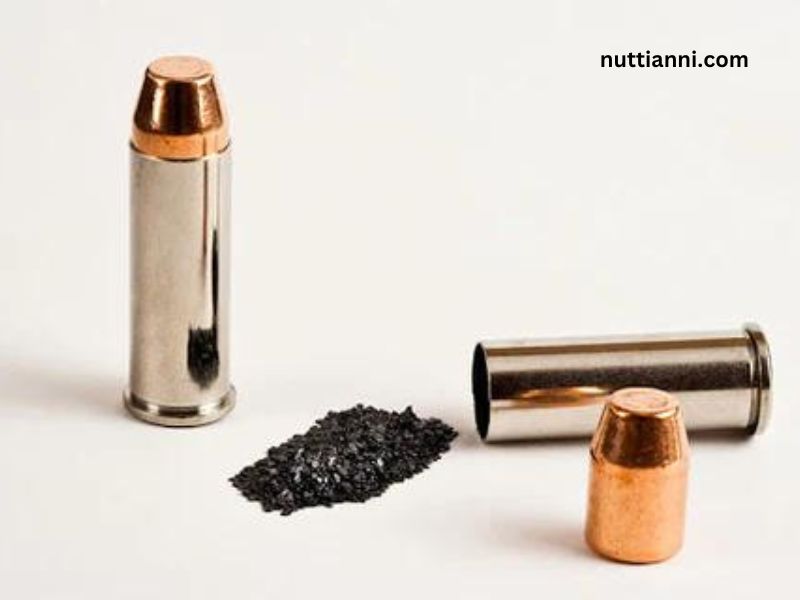When we hear the term “bullet,” the first thing that often comes to mind is speed. Bullets are designed to travel fast, and their velocity can determine their effectiveness, impact, and the dynamics of firearms. But just how fast does a bullet travel? The answer is more nuanced than one might think, involving various factors such as bullet type, gunpowder, barrel length, and environmental conditions. In this article, we’ll explore the speed of bullets, the science behind their velocity, and the implications of these speeds in practical scenarios.
Understanding Bullet Velocity
What Is Bullet Velocity?
Bullet velocity refers to the speed at which a bullet exits the barrel of a firearm. It is typically measured in feet per second (fps) or meters per second (m/s). The velocity is a crucial factor that affects the bullet’s trajectory, energy, and effectiveness upon impact.
Factors Influencing Bullet Speed
- Type of Firearm: Different firearms have different designs and mechanisms that can influence bullet speed. For example, rifles generally produce faster bullets than handguns due to the longer barrel, which allows for more complete combustion of the gunpowder.
- Type of Bullet: The design and mass of the bullet also play a significant role. Lighter bullets tend to travel faster than heavier ones. For instance, a .223 Remington round typically has a muzzle velocity of around 3,000 fps, while a .45 ACP round may have a muzzle velocity of about 850 fps.
- Barrel Length: The length of the firearm’s barrel affects how much time the bullet spends in the barrel and how completely the gunpowder burns. Longer barrels generally result in higher velocities due to increased acceleration.
- Gunpowder Type: The type and amount of gunpowder used can significantly affect a bullet’s velocity. Different formulations produce varying amounts of gas, which propels the bullet.
- Environmental Conditions: Factors such as temperature, humidity, and altitude can also affect bullet velocity. For example, higher altitudes may lead to lower air resistance, potentially increasing speed.
General Bullet Speed Ranges
To provide a clearer picture, here are general speed ranges for various types of bullets:
- Handgun Bullets: Typically range from 700 to 1,500 fps. Common calibers include:
- .38 Special: Approximately 900 fps
- 9mm Luger: Approximately 1,200 fps
- .45 ACP: Approximately 850 fps
- Rifle Bullets: Generally range from 1,500 to 4,000 fps. Common calibers include:
- .223 Remington: Approximately 3,000 fps
- .308 Winchester: Approximately 2,700 fps
- .30-06 Springfield: Approximately 2,900 fps
- Shotgun Pellets: These are usually slower, ranging from 1,200 to 1,600 fps, depending on the load.
The Physics Behind Bullet Travel
Understanding bullet speed requires a basic grasp of physics principles, particularly those concerning motion and energy.
Kinetic Energy
Kinetic energy (KE) is the energy possessed by an object due to its motion. It can be calculated using the formula:
KE=12mv2KE = \frac{1}{2}mv^2
Where:
- mm = mass of the bullet (in kilograms)
- vv = velocity of the bullet (in meters per second)
For instance, a 9mm bullet weighing 7.5 grams (0.0075 kg) traveling at 1,200 fps (approximately 366 m/s) would have a kinetic energy of about 0.5 joules. This energy is crucial in determining the bullet’s stopping power and effectiveness upon impact.
Momentum
Momentum is another critical factor, defined as the product of mass and velocity:
p=mvp = mv
Where:
- pp = momentum
- mm = mass
- vv = velocity
A bullet’s momentum contributes to its ability to penetrate targets, making it essential in understanding terminal ballistics (the behavior of a bullet when it strikes a target).
Practical Implications of Bullet Speed
Terminal Ballistics
The speed at which a bullet travels affects its performance upon impact. Faster bullets typically have greater kinetic energy, leading to more significant tissue damage and penetration. This principle is particularly relevant in fields like hunting, law enforcement, and military applications.
Range and Accuracy
The distance a bullet can travel effectively (its range) is influenced by its velocity. Faster bullets maintain their velocity better over long distances, which can improve accuracy. However, it’s essential to consider the bullet’s trajectory, wind resistance, and drop over distance, which can affect the overall effectiveness of the shot.
Subsonic vs. Supersonic Bullets
Bullets can be categorized as subsonic or supersonic based on their speeds:
- Subsonic Bullets: Travel below the speed of sound (approximately 1,125 fps at sea level). These bullets are quieter and are often used in suppressor-equipped firearms to minimize noise.
- Supersonic Bullets: Travel faster than the speed of sound, creating a sonic crack as they break the sound barrier. These bullets are typically used for their longer-range capabilities and higher kinetic energy.
Safety Considerations
The speed of a bullet also raises safety concerns. High-velocity bullets can be more dangerous, as they can penetrate harder surfaces and cause more severe injuries. This is a significant consideration for both law enforcement and civilian gun ownership.
Conclusion
The speed at which a bullet travels is a complex interplay of various factors, including firearm type, bullet design, and environmental conditions. Understanding bullet velocity is crucial for anyone involved in shooting sports, law enforcement, or military applications, as it affects accuracy, energy, and terminal performance.
From the average handgun bullet traveling at about 900 fps to high-velocity rifle rounds exceeding 3,000 fps, the differences in speed highlight the diverse nature of firearms and their applications. As technology advances, understanding these factors will become increasingly essential for responsible firearm use and safety. Whether for sport, self-defense, or professional purposes, a comprehensive grasp of bullet speed empowers individuals to make informed decisions in their shooting endeavors.









